Implen Journal Club
Implen Journal Club
Current Month Journal Club Issue
October 2025| Full Newsletter (html) (pdf)
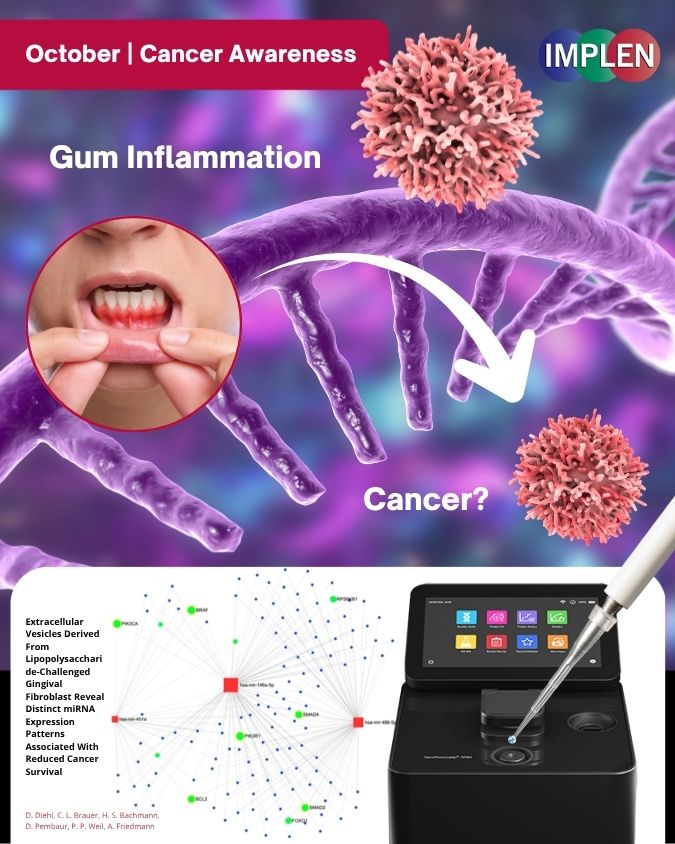
Gum Inflammation Vesicles Linked to Cancer Progression
October, known for Breast Cancer Awareness Month, also reminds us how inflammation throughout the body—including in our gums—can influence cancer risk. A recent study by Diehl et al. published in the Journal of Clinical and Experimental Dental Research found that when gum tissue cells are exposed to bacterial toxins including those causing gum disease, they release microscopic particles called extracellular vesicles with altered genetic material. These vesicles increased cancer cell growth and were tied to lower survival in some cancers, suggesting inflamed gums may influence cancer development.
The Implen NanoPhotometer® was used in this work to measure RNA concentration and purity via the optical density (OD) at 260 and 280 nm. An OD260/280 of 1.9–2.1 was classified as protein‐free RNA.
#Implen #NanoPhotometer #UVVis #Spectroscopy #BreastCancerAwareness #OralHealth #CancerResearch #MicroRNA #Periodontitis #IntegrativeMedicine
New Blood Test Tracks Cancer Treatment and Recurrence
October is Breast Cancer Awareness Month, a time to highlight breakthroughs in early detection and treatment monitoring. In a recent study by Ji Luo et al., a highly accurate indirect ELISA test to detect antibodies against the cancer antigen NY-ESO-1 was developed. Using patient serum, this method achieved 96% sensitivity and 100% specificity. Antibody levels fell after successful treatment and rose again before recurrence, showing promise for early detection, treatment monitoring, and relapse prediction in cancer patients including those with breast cancer.
The Implen NanoPhotometer® NP80 was used in this work to determine the protein concentration.
#Implen #NanoPhotometer #N60 #UVVIS #Spectroscopy #BreastCancerAwarenessMonth #CancerResearch #EarlyDetection #Immunotherapy #NYESO1 #ELISA #MolecularImmunology #BiotechInnovation #CancerDiagnostics #Serology #PrecisionMedicine
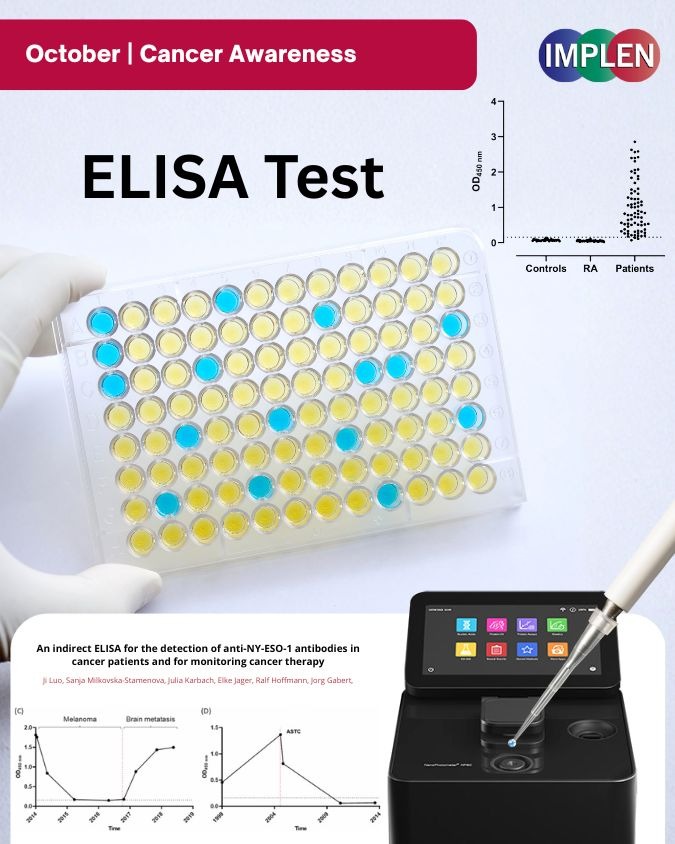
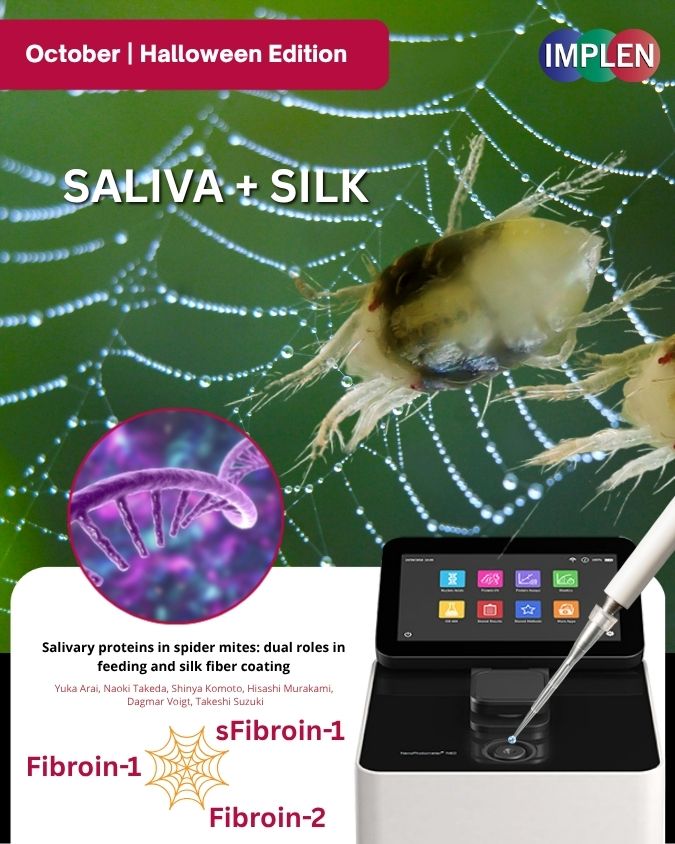
Silk and Saliva: The Dual Design of Spider Mites
As October ushers in cooler days with Halloween right around the corner, this month’s Implen NanoPhotometer Journal Club explores a fascinating study by Arai et al. on spider silk and saliva in the two-spotted spider mite. This research discovered that three salivary proteins—Fibroin-1, sFibroin-1, and Fibroin-2—also appear in the mites’ silk. Fibroin-1 and sFibroin-1 help the mites anchor their mouthparts while feeding, whereas Fibroin-2 coats silk fibers to enhance adhesion. Together, these findings reveal a remarkable biological adaptation where saliva and silk work in tandem.
The Implen NanoPhotometer® N60 was used in this study to measure the concentration of extracted RNA.
#Implen #NanoPhotometer #N60 #UVSpectroscopy #SpiderMiteResearch #ScientificDiscovery #Halloween #SpiderMiteSilk
Unlocking the Secrets of Saw-Scaled Viper Venom
As Halloween approaches, few things evoke chills like venom drawn from a deadly viper — a true “potion” of the natural world. A recent study by Javed et al. published in the Journal of Toxins decoded the venom of the saw-scaled viper (Echis carinatus carinatus), one of India’s deadliest “big four” snakes. Using advanced proteotranscriptomics, scientists identified key toxins—metalloproteinases, serine proteases, lectins, and phospholipase A₂—and found major regional variations. Encouragingly, antivenoms showed strong neutralization in lab models, improving prospects for better snakebite therapy.
The Implen NanoPhotometer® was used in this research to measure the purity of isolated RNA.
#Implen #NanoPhotometer #UVVis #Spectroscopy #ToxinsJournal #SnakeVenomResearch #Proteomics #HalloweenScience #EchisCarinatus #IndianScience #Venomics #OctoberResearch #SpookyScience
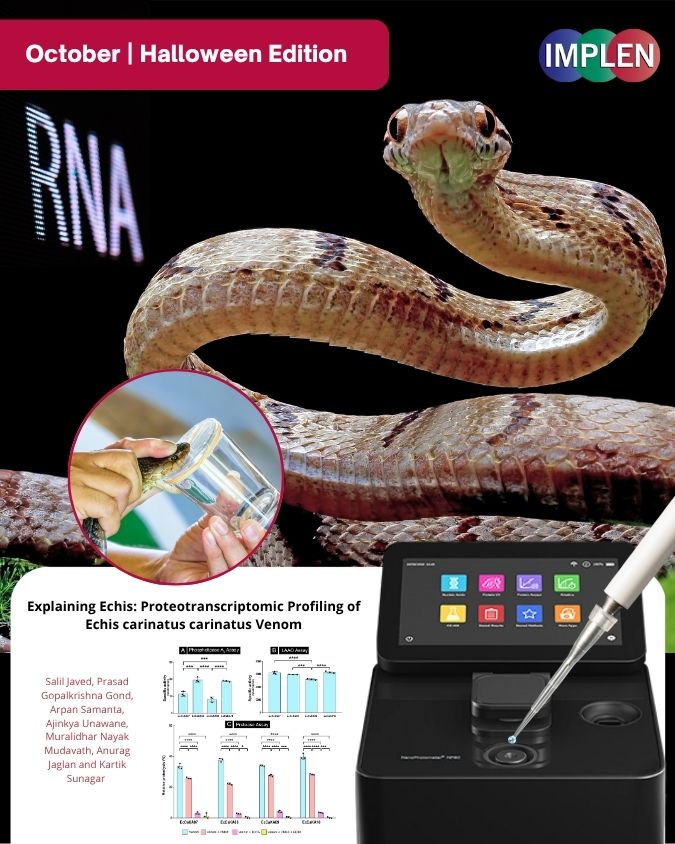
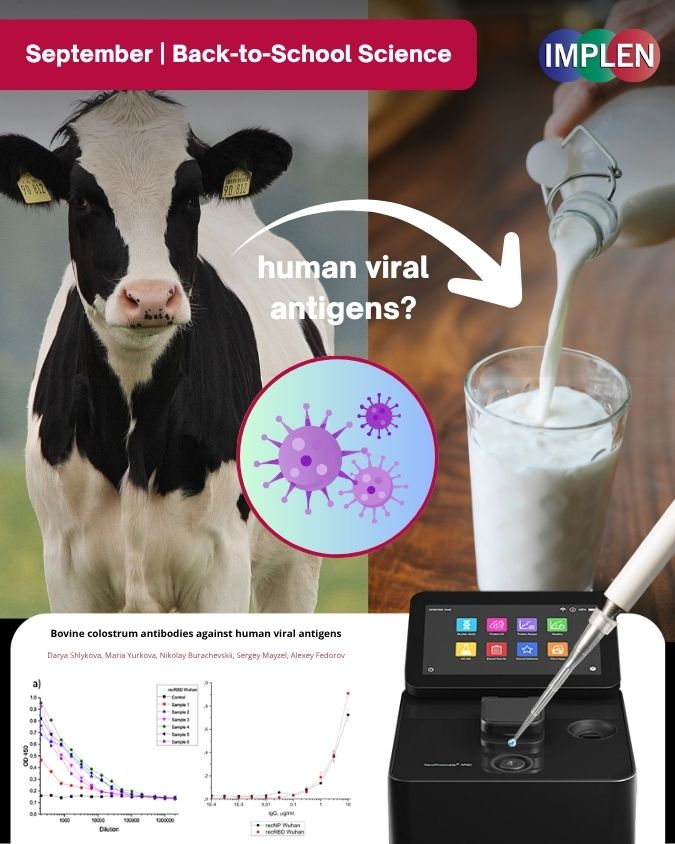
Back-to-School Science: Bovine Colostrum — Natural Antibodies With Antiviral Potential
Researchers recently published their findings in the journal of Functional Foods in Health and Disease on bovine colostrum—the nutrient-rich ‘first milk’ cows produce after giving birth—to investigate whether it contains antibodies that recognize human viruses. They found antibodies that bind to several viral antigens, suggesting potential protective effects. The study highlights colostrum as a natural source of antiviral activity and immune support.
The Implen NanoPhotometer® NP80 was used in this study to determine the protein concentration at 280 nm using the molar extinction coefficient for IgG.
#Implen #NanoPhotometer #UV/VIS #Spectroscopy #NP80 #ProteinScience #ProteinConcentration #Colostrum #FunctionalFoods #ImmuneSupport #AntiviralActivity #NaturalImmunity #NutritionScience #HealthResearch #FunctionalNutrition #HumanHealth #NaturalImmuneBoost #HealthyLiving #BackToSchoolWellness #FamilyHealth